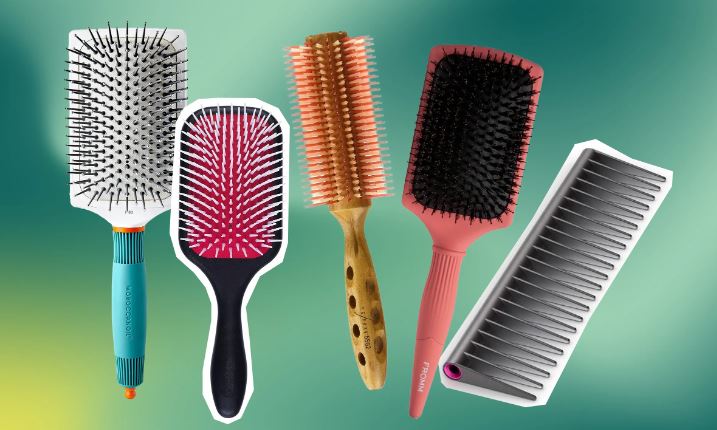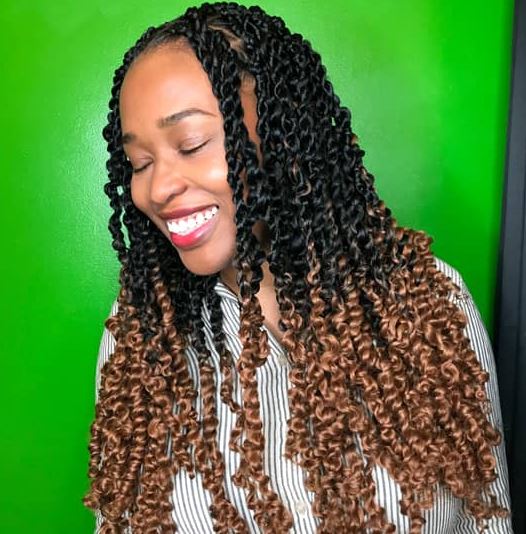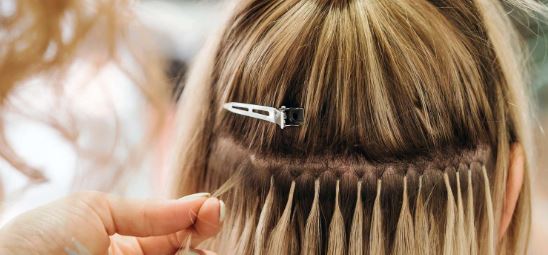Table of Contents
A great hair day starts with the right hairbrush. But with so many options on the market, how do you know which one is best for you? Fear not!
We’re here to unravel the mysteries of hairbrush selection and empower you with the knowledge to make an informed choice.

Understanding Your Hair Type
Before we delve into the different types of hairbrushes, it’s crucial to understand your hair type. Is your hair fine or thick? Curly or straight? Long or short?
Identifying your hair type will serve as the foundation for choosing the perfect brush that complements your hair’s unique needs.
Different Types of Hairbrushes
Paddle Brushes
Paddle brushes are known for their wide, flat surface and are excellent for detangling and smoothing long, straight hair. They distribute natural oils from the scalp down the hair shaft, promoting shine and reducing frizz.
Round Brushes
Round brushes come in various sizes and are perfect for creating volume and curls while blow-drying. Smaller round brushes are ideal for short hair, while larger ones work wonders for long locks.
Vent Brushes
Vent brushes are designed with openings to allow air to pass through, making them suitable for quick drying. They are gentle on wet hair and help detangle without causing breakage.
Detangling Brushes
As the name suggests, detangling brushes feature flexible bristles that glide through knots and tangles with ease. They’re a must-have for individuals with easily knotted hair.
Boar Bristle Brushes
Boar bristle brushes are known for their ability to distribute natural oils, making them a great choice for individuals with dry hair. They also help to stimulate the scalp and improve overall hair health.
Thermal Brushes
Thermal brushes are equipped with heat-conductive materials and are perfect for achieving salon-like blowouts at home. They allow you to style your hair while blow-drying, reducing the need for additional heat tools.
Teasing Brushes
Teasing brushes, also known as rat-tail brushes, are designed to add volume and texture to specific sections of hair, such as when creating updos or bouffants.
Ionic Brushes
Ionic brushes emit negative ions that help break down water molecules, reducing drying time and frizz. They work well for all hair types and are especially beneficial for those with unruly hair.
Choosing the Right Hairbrush
Fine and Thin Hair
For fine and thin hair, opt for brushes with soft bristles that won’t cause damage or breakage. A paddle brush or a boar bristle brush is an excellent choice for gently detangling and adding shine.
Thick and Coarse Hair
Thick and coarse hair requires sturdy brushes with strong bristles to effectively detangle and smooth. A paddle brush with nylon bristles or a wide-toothed detangling brush will work wonders.
Curly Hair
Curly hair benefits from brushes that won’t disrupt the natural curl pattern. A wide-toothed comb or a detangling brush with flexible bristles can help prevent frizz and breakage.
Straight Hair
Those with straight hair can opt for a variety of brushes, including paddle brushes for a sleek finish or round brushes for added volume and movement.
Long Hair
Long hair tends to tangle easily, so a detangling brush with gentle bristles is essential. A boar bristle brush can help distribute oils from the scalp to the ends, keeping your locks nourished.
Short Hair
Short hair can be styled with a paddle brush for smoothness or a small round brush to add volume and shape.
Proper Brushing Techniques
Starting from the Ends
When brushing, start from the ends and work your way up to prevent unnecessary tugging and breakage.
Brushing Wet Hair
Wet hair is more prone to damage, so use a wide-toothed comb or a detangling brush to gently work through knots after applying a conditioner or detangling spray.
Scalp Stimulation
Brushing your scalp with a soft-bristle brush can help stimulate blood circulation, promoting hair growth.
Avoid Overbrushing
While brushing is essential, overbrushing can lead to hair damage. Find the right balance and avoid excessive brushing.
Maintaining Your Hairbrush
Cleaning
Regularly remove hair from your brush and wash it with mild soap and water to prevent product buildup.
Removing Hair Build-Up
Use a comb or your fingers to remove hair trapped between the bristles.
Storage
Store your brushes in a clean, dry place to prevent dust and dirt from accumulating.
Common Hairbrush Myths Debunked
- Myth: The more you brush, the healthier your hair.
- Myth: All brushes work the same way on different hair types.
- Myth: Only expensive brushes are worth using.
Conclusion
Choosing the right hairbrush can make a significant difference in the health and appearance of your hair.
By understanding your hair type and the different brush options available, you can achieve your desired look with ease.
Remember, proper technique and maintenance are key to keeping your hairbrush and your hair in top shape.
FAQs
Can I use the same brush for wet and dry hair?
It’s best to use a wide-toothed comb or a detangling brush on wet hair to prevent breakage.
Are boar bristle brushes suitable for all hair types?
Yes, boar bristle brushes work well for various hair types, especially dry and frizzy hair.
How often should I clean my hairbrush?
Aim to clean your hairbrush at least once a week to prevent buildup.
Can I use a round brush on short hair?
Absolutely! A small round brush can add volume and shape to short hair.
Do ionic brushes really reduce frizz?
Yes, ionic brushes emit negative ions that help minimize frizz and promote smoother hair.




